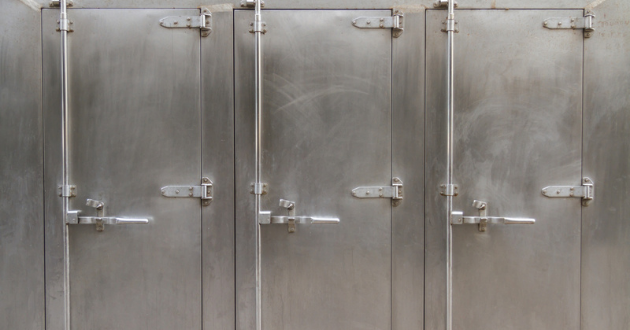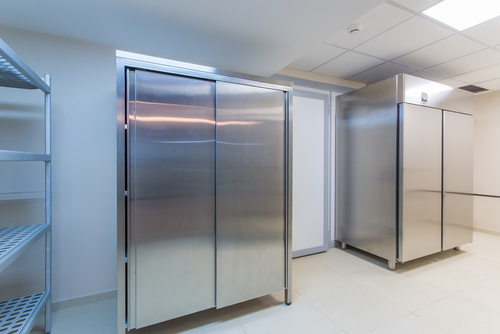
The Basics of Industrial Refrigeration
The global industrial refrigeration market has shown steady growth over the last few years, and even with COVID-19 disrupting every industry, that growth hasn’t majorly halted. This is due to the fact that industrial refrigeration covers a variety of different machinery and processes. As a result, these are a critical component of several industries, from food processing to construction. Without keeping specific tools or machines at a proper temperature, the entire process could be jeopardized, which, in turn, creates a ripple effect across other areas of the business. In fact, chiller systems and industrial refrigeration take up so much electrical power, it is estimated to be a consumer of 20% of all North American electrical power.
Because of this, a mechanical contractor that’s able to install and service industrial refrigeration systems will likely have no shortage of clients. However, this is a field that requires a specialized set of knowledge. Here’s a starter guide to what industrial refrigeration entails, and the different areas that a contractor may need to service.
Table of Contents
What Is Industrial Refrigeration?
In essence, industrial refrigeration systems are machines that use the refrigeration process to remove heat from a given item. Some of the settings where this machinery is most common include:
- -Brewing
- -Food processing
- -Construction
In many cases, to make a mass amount of a given product, chilled components like water are required on a large scale. Cheese and even wine/spirits are a good example of this. In order to mass-produce these, your typical refrigerator simply doesn’t have the capacity to keep the materials within a certain temperature range.
There are also high uses of these in the manufacturing world as well. In many cases, a given product will need to be tested in environmental conditions to ensure it retains its stability and function. Low and high temperatures/humidity are a good example. In some cases, refrigeration is needed to create certain plastics and metals.
How exactly does this happen? Like the refrigerator in a typical home, industrial refrigeration systems use the refrigeration cycle, a manipulation of heat transference in order to create cool conditions. Now, we can get into the specific details of how that is managed in an industrial setting.

Components of Refrigeration
With this in mind, let’s break down the 4 key components of all industrial refrigeration systems.
Refrigerants: Refrigerants are the different liquids that transfer heat from one area to the other. Each of these takes on new forms as temperature and pressure cause them to change. For example, as the system gets hotter, it becomes a vapor. As it cools, it reverts to a liquid state. This creates the refrigeration cycle of heating and cooling. The most common types of refrigerations you’ll see in industrial settings are ammonia and R-134a. R-134 is free of halogen to help the environment and create safer conditions. Ammonia, by comparison, is older and better at absorbing heat. Other refrigerants that can be used include carbon dioxide, hydrocarbons, and fluorocarbons.
Compressor: When refrigerant is vaporized due to heat, it enters the compressor, a component that raises the pressure and temperature of the vapor. In order to have an effect, the temperature needs to be higher than the condensing fluid to continue the refrigeration cycle. The compressor also serves as a pump to keep the refrigerant moving through the system. Note that your typical industrial compressor can be one of the following types:
- -Screw
- -Piston
- -Centrifugal
- -Rotary
Generally, centrifugal and crew are the most popular.
Condenser: After the refrigerant leaves the compressor, it goes into the condenser, also known as the coil. This is generally set outdoors. The condenser coil is generally exposed to something cool, so the refrigerant can release heat. This can range from outdoor air to water to other types of fluids. The release of heat causes the refrigerant to condense and go into a liquid state. The main goal here is that when the refrigerant goes out of the condenser, it should be cooler, but have the same pressure.
Three main types of condensers are used in the world of industrial refrigeration:
- Air-cooled: This style exposes refrigerant to outside air to cool it down, sometimes using a fan or blower to move the air across the entire surface.
- Water-cooled: This generally uses a second tube by the refrigerant tube, filled with water. The heat starts to transfer to the water away from the refrigerant.
- Evaporative: This style is similar to a cooling tower. Water is sprayed on the refrigerant coil to transfer heat. This creates heated, moist air that is forced out of the system with a fan/blower. This is also the most common of the three methods.
Metering Device: The refrigerant enters this device after leaving the compressor. This fulfills two key functions. First, it slows the flowing rate of refrigerant into the evaporator (more on this a moment). It also drops the pressure. In essence, this device is a valve between the high and low-pressure parts of the refrigeration system.
Evaporator: This is the final stage of the cycle, where all unwanted heat is absorbed. This is similar to the condenser (as it is also a coil), but here, the refrigerant is evaporated. Industrial settings use either air coil evaporators or liquid coolers.

Industrial refrigeration companies and general mechanical contractors alike are well served by learning the fundamentals of these systems. Being able to implement this could represent a valuable revenue stream for your company. At the same time, though, whether you specialize in industrial refrigeration services or just want to treat it as an add-on, you’re going to need some additional support. This ranges from tracking your equipment and workers to being able to move directives between your field and office teams.
Any business planning on working with industrial refrigeration systems should be sure that they use project management software like eSUB. This is an invaluable source of workplace data like labor tracking and equipment usage, which helps you make more informed decisions later on. In addition, it provides a full picture of your company’s financial health.
